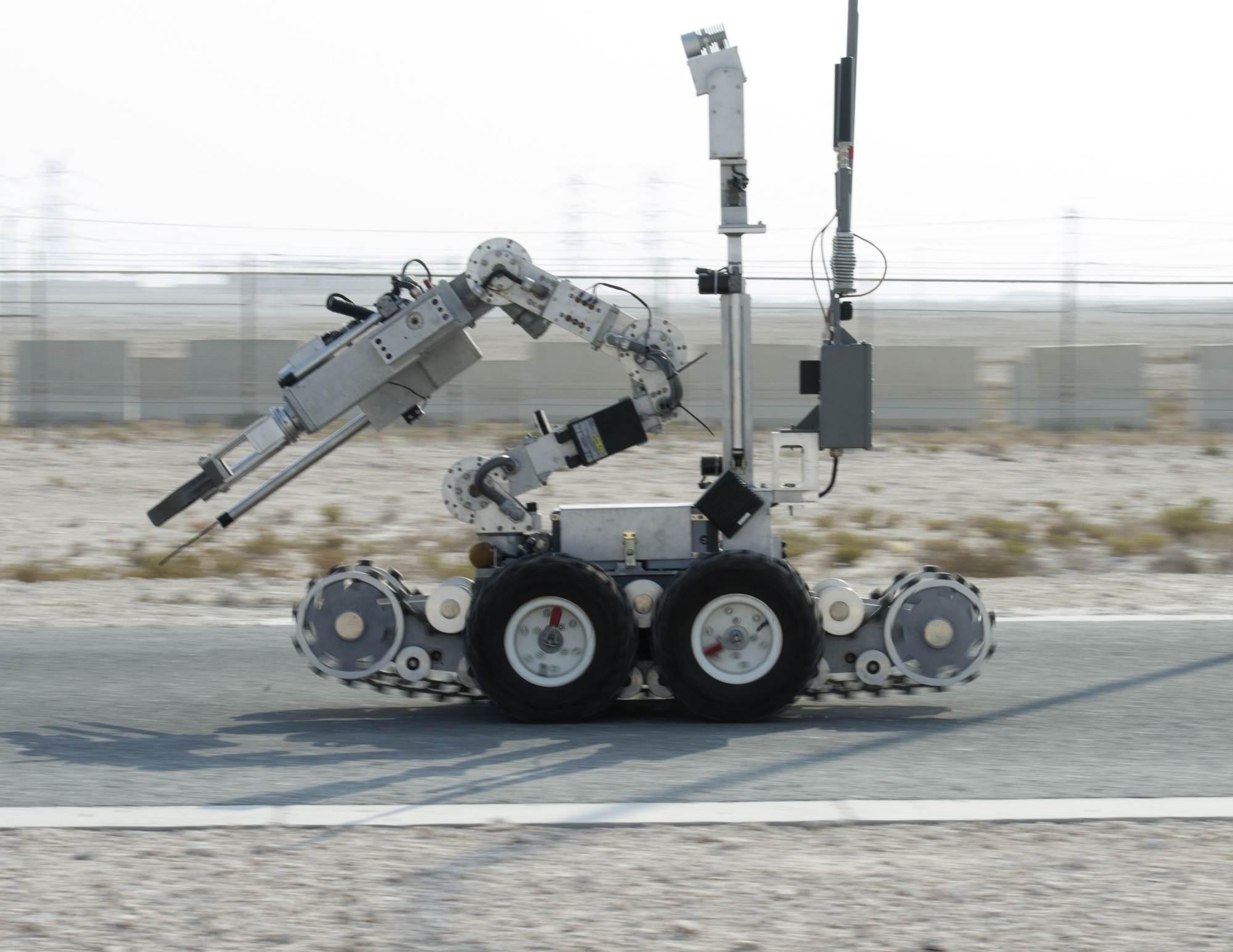

On November 29, San Francisco’s government voted 8 to 3 to authorize the use of lethal weapons by police robots. The vote and authorization, which caught national attention, speaks directly to the real fears and perils regarding the use of robotics and remote-control tools domestically. The vote took place in the context of a 2021 law enacted by California mandating that police get approval from local governing authorities over what equipment it uses and how it does so.
As the the San Francisco Chronicle reported, city Supervisor Aaron Peskin told his colleagues: “There could be an extraordinary circumstance where, in a virtually unimaginable emergency, they might want to deploy lethal force to render, in some horrific situation, somebody from being able to cause further harm,” offering a rationale for why police may want to use a robot to kill.
Police robots are not new, though the acquisition of military-grade robots was bolstered by a program that offered local police departments surplus military goods. Bomb squad robots, used heavily in Iraq and Afghanistan to relocate and safely dispose of roadside bombs, or Improvised Explosive Devices, were offered to police following the drawdowns of US forces from those countries in the 2010s.
Many of the tools that ultimately end up in police hands first see their debut in military contexts, especially in counter-insurgency or irregular warfare. Rubber bullets, a now-ubiquitous less-lethal police weapon, have their origin in the wooden bullets of British Hong Kong and the rubber bullets of British forces in Northern Ireland. MRAPS, the massive heavy armored vehicles hastily produced to protect soldiers from bombs in Iraq and Afghanistan, have also seen a second post-war life in police forces.
Bomb squad robots are remarkable, in part, because they are a tool for which the military and police applications are the same. A robot with a gripper and a camera, remotely controlled over a long tether, can inspect a suspicious package, sparing a human life in the event of detonation. Police and military bomb squads even train on the robots together, sharing techniques for particularly tricky cases.
San Francisco’s government voted to allow police, with explicit authorization from “one of two high-ranking SFPD leaders” to authorize the lethal use of an armed robot, reports the San Francisco Chronicle. The Chronicle also notes that “the department said it has no plans to outfit robots with a gun,” instead leaving the killing to explosives mounted on robots.
Past precedent
There is relevant history here: In the early hours of July 8, 2016, police in Dallas outfitted an explosive to a Remotec Andros Mark V-A1 and used it to kill an armed suspect. The night of July 7, the suspected shooter had fired on seven police officers, killing five. Dallas police surrounded the suspect and exchanged gunfire during a five-hour standoff in a parking garage. The Dallas Police Department had operated this particular Remotec Andros bomb squad robot since 2008.
On that night in July, the police attached a bomb to the robot’s manipulator arm. Operated by remote control, the robot’s bomb killed the suspect, while the lifeless robot made it through the encounter with only a damaged manipulator arm. The robot gripper arms are designed to transport and relocate found explosives to a place where they can be safely detonated, sometimes with charges placed by the robot.
While Dallas was a groundbreaking use of remote-control explosives, it fit into a larger pattern of police using human-set explosives, most infamously the 1985 MOVE bombing by Philadelphia Police, when a helicopter delivered two bombs onto a rowhouse and burned it down, as well as 65 other houses.
Flash bang grenades are a less-lethal weapon used by police and militaries, creating a bright light and loud sound as a way to incapacitate a person before police officers enter a building. These weapons, which are still explosive, can cause injury on contact with skin, and have set fires, including one that burned a home and killed a teenager in Albuquerque, New Mexico in July 2022.
The authorization to arm robots adds one more category of lethal tools to an institution already permitted to do violence on behalf of the state.
Remote possibilities
Bomb squad robots, which come in a range of models and can costs into the six figures, are a specialized piece of equipment. They are often tethered, with communications and controls running down a large wire to humans, ensuring that the robot can be operated despite interference in wireless signals. One of the ways these robots are used is to facilitate negotiations, with a microphone and speaker allowing police to safely talk to a cornered suspect. In 2015, California Highway Patrol used a bomb squad robot to deliver pizza to a knife-armed man standing over a highway overpass, convincing the man to come down.
The possibility that these robots could instead be used to kill, as one was in 2016, makes it harder for the robots to be used for non-violent resolution of crises with armed people. In the Supervisors’ hearing, references were made to both the 2017 Mandalay Bay shooting in Las Vegas and the 2022 school shooting in Uvalde, though each is a problem at best tangentially related to armed robots. In Las Vegas, the shooter was immediately encountered by an armed guard, and when police arrived they were able to breach rooms with explosives they carried. In Uvalde, the use of explosives delivered by robot would only have endangered children, who were already waiting for the excruciatingly and fatally long police response to the shooter.
By allowing police to turn a specialized robot into a weapon, San Francisco is solving for a problem that does not meaningfully exist, and is making a genuinely non-lethal tool into a threat. It also sets a precedent for the arming of other machines, like inexpensive quadcopter drones, increasing the distance between police and suspects without leading to arrests or defused situations.
